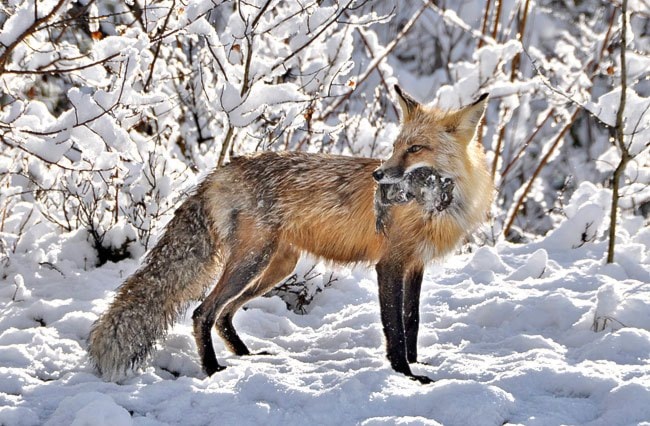by Erling Friis-Baastad
Shopping done? Cookies baked? Good. Now for one last little challenge for 2012.
It should be a snap if you’ve been paying attention to Your Yukon columns all year. Even if you haven’t, it’s not too late. Go to www.taiga.net/yourYukon/archives2012.html if you get stuck. All right answers are in the archives for the year 2012.
If you score 11 through 13, consider yourself a thriving year-round resident; 7 through 10, a dependable summer migrant; 4-6, an occasional visitor; 0-3 a tropical passerine, blown off course.
Now, spread your wings and soar into the new year!
1. Anaerobic digestion refers to
a. what happens if you eat a large bowl of popcorn on an empty stomach.
b. a technique for skewing an election outcome.
c. a process by which bacteria digest waste and expel carbon dioxide and methane.
d. the lifestyles of the rich and famous.
2. Palaeogene microfossil assemblages reveal that, from about 65 million to 23 million years ago, the northern Yukon was
a. a monarchy.
b. a republic.
c. a rest stop for intergalactic travelers.
d. somewhat similar in climate and ecology to parts of Southeast Asia today.
3. The Yukon’s Community Ecological Monitoring Program seeks to
a. ensure subsistence hunters are duly licensed.
b. place CCTV cameras in all popular hunting and fishing areas.
c. tap into the environmental knowledge of non-scientists who work and play on the land.
d. encourage foreign investment in the territory.
4. People are wrong to claim that red foxes
a. have recently run the Arctic foxes out of the Yukon’s Far North.
b. make great pets for children.
c. can’t survive the winter unless we feed them.
d. have begun to mate with wolves because of the pressures of climate change.
e. all of the above.
5. If you ever see bats flying around in February it is likely a sign
a. they are suffering from white nose syndrome and can’t sleep.
b. spring is coming early to the North.
c. your glasses are fogging up.
d. climate-change stress is forcing them to mate early.
6. Scientists hope biochar will benefit northerners because it could
a. warm water for use in fish farms.
b. discourage Arctic ground squirrels from attacking tomato plants.
c. kill mosquito larvae by choking off their oxygen supply.
d. clean contaminated soil.
7. The red admiral is known as the “butterfly of doom” because
a. its bite was once thought to be poisonous.
b. especially massive migrations are followed by severe hurricane seasons.
c. their larvae destroy wheat crops, leading to famine.
d. Tsar Alexander II was assassinated during a great red admiral migration.
8. Palsas are
a. dance moves performed by ptarmigan during mating season.
b. sores on the legs of ungulates that must repeatedly break through the frozen crust on late-winter snow.
c. congregations of butterflies on the muddy edges of puddles.
d. islands of permafrost.
e. mammal couples before or after mating season.
9. Yukon College’s Renewable Resources Management program students recently discovered that the major cause of aspen mortality at their carbon-offset test plot was
a. over-enthusiastic tree huggers
b. coal-dust particulates from China.
c. the woolly lousewort.
d. ATVs.
10. Archeologists find preserved artifacts in ice patches because
a. the patches gradually move down slope, making it easier for scientists to reach the artifacts inside them.
b. they can’t be bothered to look anywhere else.
c. oral records tell them to look there.
d. ice patches remain stationary and don’t grind up the treasures within them.
11. Over millennia, plants and fungi have worked out a deal by which
a. some fungi live among the plant roots, where they produce nitrogen, which the roots can absorb. The plants, in turn, allow the fungi to absorb the carbohydrates they produce through photosynthesis.
b. the fungi release bitter toxins, which discourage rodents from eating the plants, while the plants provide acids from which the fungi manufacture toxins.
c. colourful mushrooms lure pollinators close to more drab flowers that would otherwise be neglected. When flower petals drop off, they provide nutrients for the mushrooms.
d. larger fungi shelter plants from the hot sun; in turn, the grateful, grown plant will later shelter the more vulnerable old fungi.
12. At a recent International Polar Year conference in Montreal, the Yukon Research Centre attracted visitors because of an interesting booth and because they gave away
a. helium balloons shaped like steppe bison.
b. dirt samples from Bonanza Creek.
c. dirt samples from behind the legislature building.
d. caribou hot dogs.
e. smoked salmon.
13. Prior to the establishment of the Yukon Conservation Data Centre, the territory lacked
a. warm-blooded animals.
b. a decent cup of coffee.
c. helmet laws for anglers.
d. a complete electronic list of its plants and animals.
This column is co-ordinated by the Yukon Research Centre with major financial support from Environment Yukon and Yukon College. The articles are archived at www.taiga.net/yourYukon
Answers: 1c, 2d, 3c, 4e, 5a, 6d, 7d, 8d, 9d, 10d, 11a, 12e, 13d
